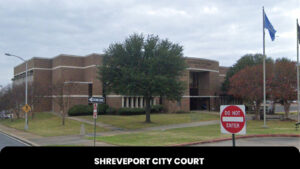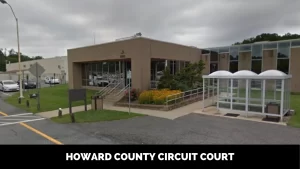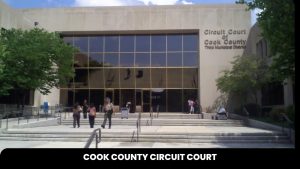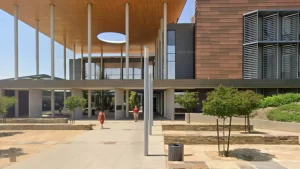U.S. District Court for the Southern District of Indiana
Introduction
The U.S. District Court for the Southern District of Indiana is one of the 94 federal judicial districts in the United States. It covers the southern half of the state of Indiana and includes major cities like Indianapolis, Evansville, and Terre Haute. This article will provide an in-depth look at the court, including its history, jurisdiction, courthouses, judges, cases, and more.
Overview of the District
U.S. Marshal and Courthouse
The U.S. Marshal for the Southern District of Indiana is Joseph McClain. The main courthouse, known as the Birch Bayh Federal Building and United States Courthouse, is located at 46 East Ohio Street, Suite 179 in Indianapolis. This courthouse opened in 1976 and is named after former Indiana senator and presidential candidate Birch Bayh.
Geographical Jurisdiction
The Southern District of Indiana covers 52 of Indiana’s 92 counties. It includes the following counties:
Bartholomew, Boone, Brown, Clark, Clay, Clinton, Crawford, Davies, Dearborn, Decatur, Delaware, Dubois, Fayette, Floyd, Fountain, Franklin, Gibson, Greene, Hamilton, Hancock, Harrison, Hendricks, Henry, Howard, Jackson, Jefferson, Jennings, Johnson, Knox, Lawrence, Madison, Marion, Martin, Monroe, Montgomery, Morgan, Ohio, Orange, Owen, Parke, Perry, Pike, Posey, Putnam, Randolph, Ripley, Rush, Scott, Shelby, Spencer, Sullivan, Switzerland, Tipton, Union, Vanderburgh, Vermilion, Vigo, Warrick, Washington, Wayne
This covers a large portion of southern and central Indiana, from the Illinois border to the Ohio border. The district is home to around 4 million residents, making it the 33rd most populous of the 94 federal judicial districts.
Courthouse Locations
In addition to the main courthouse in Indianapolis, the Southern District of Indiana holds court in four other cities:
- Evansville – Gene P. Shook Federal Building and U.S. Courthouse
- New Albany – Lee H. Hamilton Federal Building and U.S. Courthouse
- Richmond – Mickey R. Davis Federal Building and U.S. Courthouse
- Terre Haute – Federal Building and U.S. Courthouse
This allows cases to be heard closer to where parties and witnesses reside.
History of the District
The U.S. District Court for the District of Indiana was established on March 3, 1817, with the first session held in Vincennes on May 5, 1817. At that time, Indiana was not yet a state, only a territory.
On April 21, 1928, the District of Indiana was divided into Northern and Southern Districts due to its growing population and caseload. The Southern District received jurisdiction over roughly the southern half of the state.
Some key developments and milestones in the district’s history include:
- 1825 – Congress moves the court to Indianapolis, which became the state capital in 1824.
- 1846 – The court begins holding sessions in Evansville and New Albany.
- 1928 – The district is formally divided into Northern and Southern Districts.
- 1940 – The Birch Bayh Federal Building opens, housing the main Indianapolis courthouse.
- 1976 – The Birch Bayh Federal Building is renamed and expanded.
Over its history, the Southern District has heard many prominent cases involving federal law, from business disputes to civil rights cases. Its judges have also made significant rulings in cases related to search and seizure, employment law, bankruptcy, and more.
Federal Jurisdiction and Caseload
The U.S. District Court for the Southern District of Indiana carries a substantial caseload across its areas of jurisdiction. Like all federal district courts, it has original jurisdiction over:
- Federal crimes
- Civil cases involving federal law
- Bankruptcy cases
- Admiralty law
- Patent cases
- Cases involving the U.S. government
This includes both criminal prosecutions and civil lawsuits that arise under federal statutes, the U.S. Constitution, or treaties. For example, the court frequently hears cases involving federal crimes like drug trafficking, firearms offenses, and immigration violations.
The district received over 3,000 new case filings in 2021. The majority were civil cases followed by criminal felony cases like fraud or drug crimes. Appeals from the district court are heard by the Seventh Circuit Court of Appeals.
District Judges
There are currently six federal district judges serving on the U.S. District Court for the Southern District of Indiana. They are nominated by the President and confirmed by the Senate for lifetime appointments.
The current Southern District judges are:
- Chief Judge Jane Magnus-Stinson (Indianapolis)
- Judge James R. Sweeney II (Indianapolis)
- Judge Richard L. Young (Indianapolis)
- Judge Tanya Walton Pratt (Indianapolis)
- Judge Sarah Evans Barker (Indianapolis)
- Judge Jeremy McKinney (Terre Haute)
Over its history, the district has had around 50 federal judges serve, including several prominent Hoosier jurists. Notable past judges include federal appeals judge S. Hugh Dillin, civil rights champion William E. Steckler, and Senator Birch Bayh’s father Birch Evans Bayh.
The judges preside over cases from courthouses across the district, with most working primarily from Indianapolis. They handle trials, hearings, motions, and other proceedings in their judicial role.
Major Cases and Decisions
The Southern District of Indiana has shaped federal law through its rulings in many high-profile cases over the years. Some notable cases and decisions include:
- United States v. Grubbs (2006) – Judge Young ruled that police could not use thermal imaging on a home without a warrant, which was upheld by the Supreme Court.
- ACLU v. O’Bannon (1978) – Judge Steckler struck down an Indiana law requiring the inspection of prison mail, ruling it violated the First Amendment.
- Indiana Civil Liberties Union v. O’Bannon (1997) – Judge Barker ruled certain abortion restrictions in Indiana were unconstitutional and blocked enforcement.
- FTC v. Loma International Business Group Inc. (2013) – Judge Lawrence ruled that defendants had operated a scam payday lending scheme and banned them from the industry.
- USA Gymnastics sex abuse scandal cases (2018-present) – The court has presided over lawsuits related to Larry Nassar’s abuse of young athletes.
These and many other cases have shaped the application of federal law on important constitutional issues, consumer protection, and civil rights. The district’s rulings have had influence beyond Indiana in some cases.
Going to Court in the Southern District
Individuals and companies residing in the 52 counties covered by the Southern District will have any federal cases heard by this court. For those involved in civil or criminal federal lawsuits here, there are some key things to know:
- The main courthouse is in Indianapolis, but cases may be heard in other cities if more convenient.
- Parties can hire their own lawyers or request appointed counsel if eligible. The federal public defender office represents indigent defendants.
- Initial appearances, arraignments, plea hearings, and trials will be scheduled before a district judge.
- Litigants have the right to demand a jury trial for civil and criminal cases. Most trials take place before a judge only.
- Court records such as docket sheets, motions, and verdicts are public in federal court.
- Interpreters are provided for non-English speakers and sign language is available for the deaf or hard of hearing.
Navigating the federal court system can be complex, so working with an experienced attorney is advisable for anyone involved in a significant civil or criminal case before the court.
Conclusion
For over 200 years, the U.S. District Court for the Southern District of Indiana has served an important role in the federal judiciary. While less prominent nationally than courts like the Southern District of New York, this district impacts the lives of millions of Hoosiers. With jurisdiction over a wide range of federal cases and statutes, the court continues to make influential rulings from its courthouses in Indianapolis, Evansville, New Albany, Richmond and Terre Haute. The Southern District’s judges, marshals, clerks, and staff keep the wheels of justice turning across central and southern Indiana.
Frequently Asked Questions
1. How many district judges serve on the court?
There are currently six federal district judges serving on the U.S. District Court for the Southern District of Indiana located in Indianapolis.
2. What kinds of cases are heard by the Southern District?
Like all U.S. district courts, the Southern District of Indiana hears cases involving federal laws and statutes, including federal crimes, civil lawsuits arising under federal regulations, bankruptcy cases, patent cases, and lawsuits involving the federal government.
3. Who appoints the federal judges in the Southern District?
Federal district judges are nominated by the President of the United States and then confirmed by the U.S. Senate. Judges serve lifetime terms once appointed.
4. Can I visit or watch proceedings in the Southern District?
Yes, court proceedings are generally open to the public to attend, unless the case involves confidential information requiring a closed courtroom. Each courthouse has a public viewing area for trials and hearings.
5. How can I access public court records for the Southern District?
Civil and criminal court records can be accessed online through PACER (Public Access to Court Electronic Records) or by visiting the clerk’s office in person at one of the district’s courthouses.






